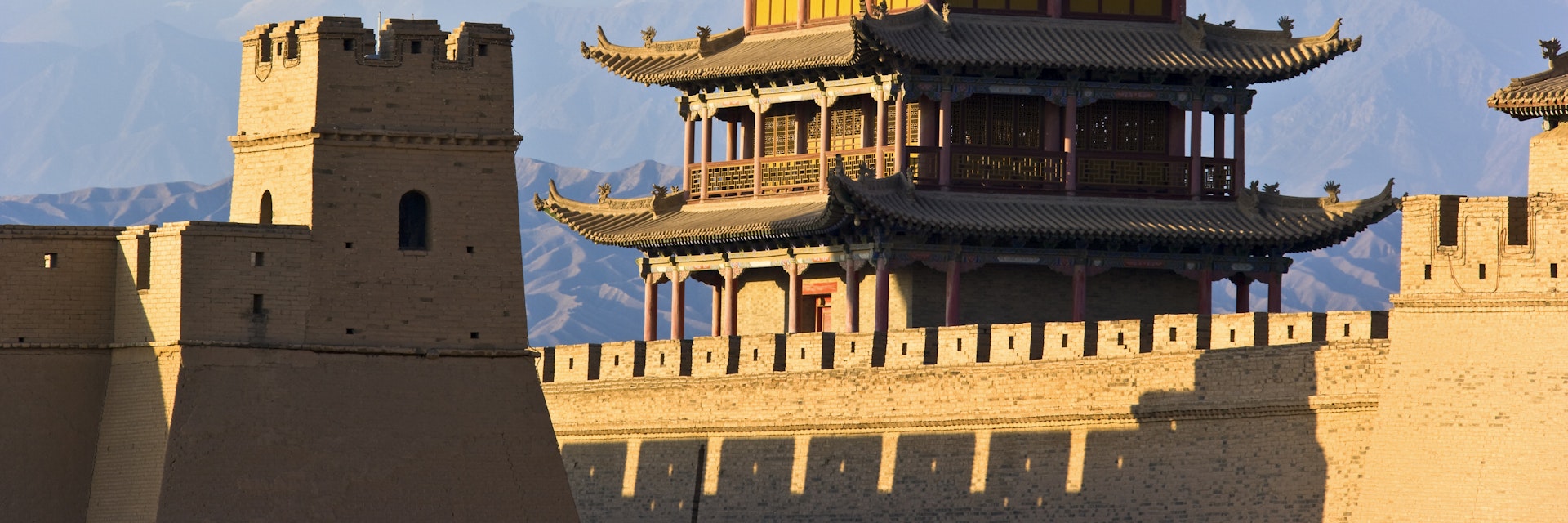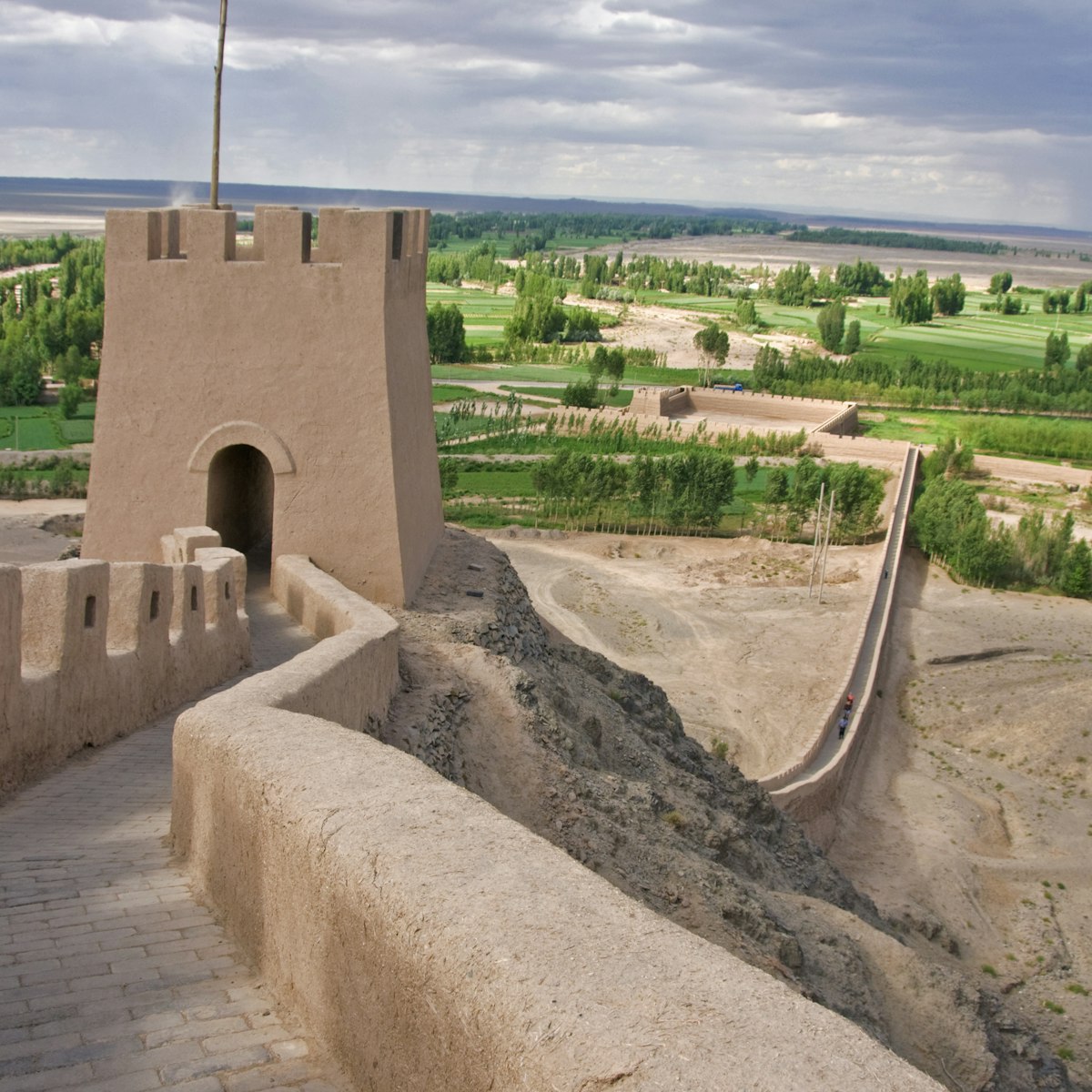One of the classic images of western China, this huge fort once guarded the narrow pass between the snowcapped Qilian Shan peaks and the Hei Shan (Black Mountains) of the Mazong Shan range.
Built in 1372, it was named the ‘Impregnable Defile Under Heaven’. Although the Han Chinese often controlled territory far beyond here, this was the last major stronghold of imperial China – the end of their ‘civilised world’, beyond which lay only desert demons and the barbarian armies of Central Asia.
Towards the eastern end of the fort is the Gate of Enlightenment (光化楼, Guānghuá Lóu) and on the west side is the Gate of Conciliation (柔远楼, Róuyuǎn Lóu), from where exiled poets, ministers, criminals and soldiers would have ridden off into oblivion. Each gate dates from 1506 and has 17m-high towers with upturned flying eaves and double gates that would have been used to trap invading armies. On the inside are horse lanes with steps leading up to the top of the inner ramparts where you can wander around. Back on ground level, you can also see a former stage for performances, opposite a sizeable Guandi Temple (Guāndì Miào). Note the wall of the Wenchang Pavilion next to the Guandi Temple, which is still covered in a large, yellow and flaking Maoist slogan from the Cultural Revolution.
Near the fort entrance gate is the excellent Jiayuguan Museum of the Great Wall, which has some interesting exhibits about the Wall and its history in this part of China.


